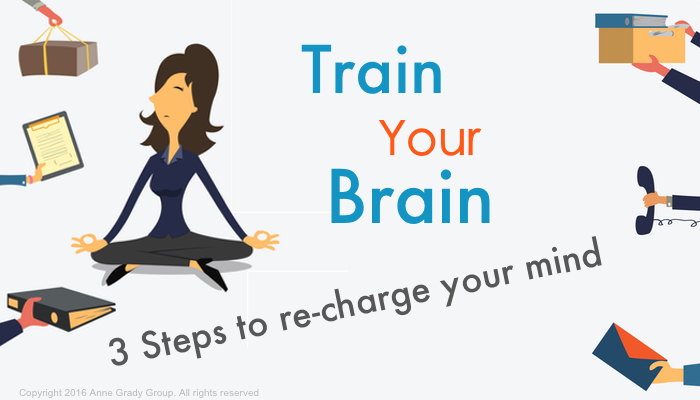My mind can drive me crazy. It feels like it is constantly running, thinking, planning, or worrying about something. Anything. It can be exhausting.
I have been making a concerted effort to quiet my mind and to be in the moment, but with kids, dogs, phones ringing, email dinging, and a constant state of interruptions, it can be hard. I know meditation is beneficial, and I know I feel better when I do it, yet I’ve fallen short.
I realize there are no quick fixes when it comes to quieting my mind, but I am always on the lookout for a simple process that will work for me. Andy Puddicombe (@AndyPuddicombe), co-founder of Headspace, a mediation app, presented a session at SXSW Interactive on the practice of meditation, and I found it really helpful, so I thought I’d share.
 “We are always busy in an
“We are always busy in an
attempt to create more time”
Andy said something that really hit home. “We are always busy in an attempt to create more time”. How true. We take time management classes, learn workflow processes, and make endless “to-do” lists, all in an attempt to find more time. Then, when we do have time, we fill it with things to try to make ourselves happy and content, only to feel more stressed and overwhelmed.
Countless studies have been done on the benefits of meditation. UCLA, Harvard, Yale, and numerous other research programs have found that meditation literally changes the brain, and multiple studies show that it rivals the effectiveness of anti-depressants for treating depression and anxiety.
What once many thought to be “fluff” has proven to be incredibly effective, even profitable. My insurance company, Aetna, instituted a mindfulness training program for employees. On average, stress levels dropped by almost 30%, sleep quality improved, and pain levels diminished. Participants gained an average of an hour of additional productivity each week, saving the company hundreds of thousands of dollars each year.
Andy shared a straight-forward, three-step process that even I can do:
Step 1 – Have realistic expectations.
Just because you “clear” your mind doesn’t mean you won’t still have random thoughts popping in and out. “What am I going to eat for dinner?” “Did I remember to buy a present for the birthday party this weekend?” “Why does my leg keep itching?” All kind of thoughts will wander through your mind. It’s normal. Expect it and let the thought roll on by, bringing yourself back to the present.
Step 2 – Don’t force it.
It’s like tossing and turning in the middle of the night, desperately trying to sleep faster so that you won’t be tired in the morning. It just adds more anxiety. Instead of trying to force it, give yourself permission to just go with it, gently bringing yourself back. Keep breathing.
Step 3 – Let your thoughts pass by.
Think of your thoughts like passing cars whizzing by on a highway. When you think about something, acknowledge it, and then watch it pass by. If you get stuck on a thought, don’t try to force yourself to stop thinking about it. Just let it pass by at its own pace, and bring yourself back to taking deep breaths and being aware of your body.
Remember! Meditation can be used by anyone, anywhere.
We don’t have to go on a week long, silent retreat to meditate, but we do have stop and be still. Our minds are used to running and being busy. Getting them to slow down will take some time. Aristotle once said, “We are what we repeatedly do. Excellence, then, is not an act, but a habit.” Just like any other habit, mediation takes practice.
Technology and our current life-style have created a constant stream of information and stimulation. Our mind was not meant to be active 100% of the time It needs rest, quiet, and time to recharge. Meditation is basically a charging station for your brain. We charge our devices, and now it’s time to charge ourselves.


Today’s message was simple, realistic and practical. Thanks for sharing.
Thanks, Joy! Glad you liked the post!
Sharp thigkinn! Thanks for the answer.
Thanks, Denise!